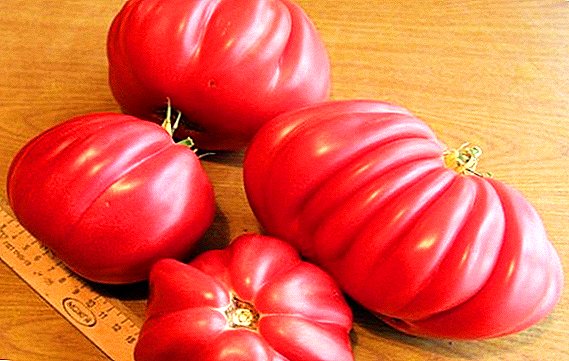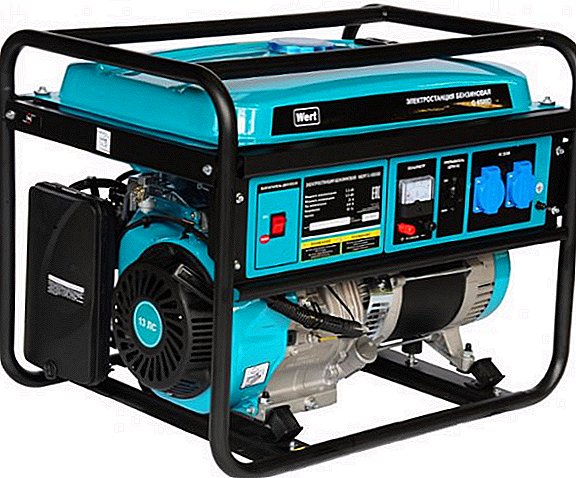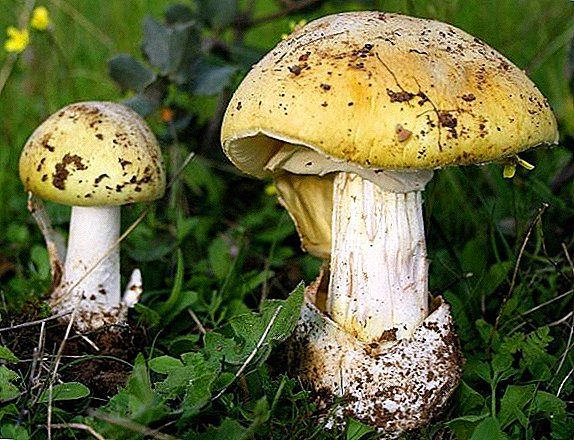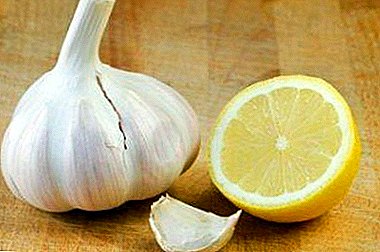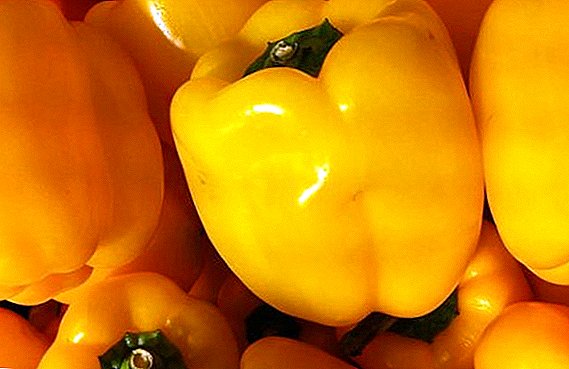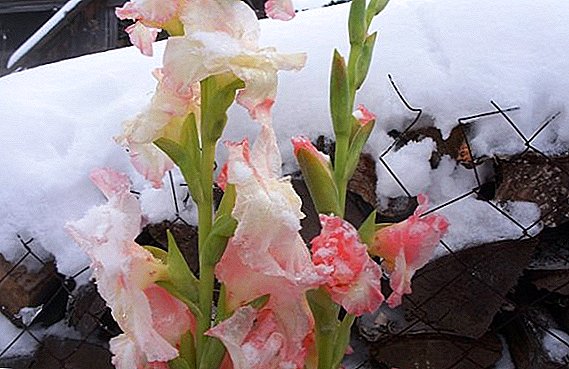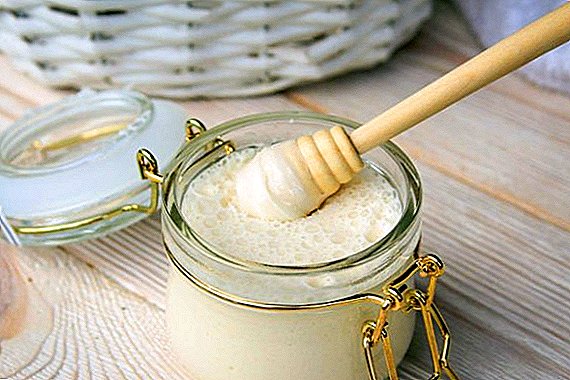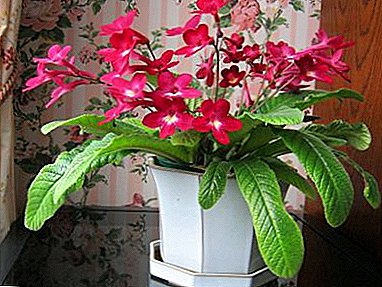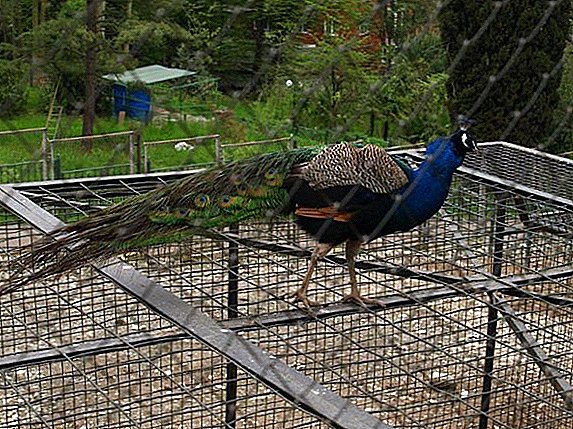 Like many other birds, peacocks need a spacious area for walking, and in order for them not to leave their "native" possessions and always be safe, you need to build a good aviary. To do this is not as difficult as it may seem at first, but to be sure of this, it is enough to familiarize yourself with the information below.
Like many other birds, peacocks need a spacious area for walking, and in order for them not to leave their "native" possessions and always be safe, you need to build a good aviary. To do this is not as difficult as it may seem at first, but to be sure of this, it is enough to familiarize yourself with the information below.
Why do I need an enclosure for peacocks
Peacocks can be safely called decorative birds, because most often they are bred precisely for aesthetic reasons or as a source of beautiful feathers. With the right approach to the content, they will really become a real decoration of the site.
Consider in more detail the characteristics of the most popular species of peacocks, as well as learn all the features of the white and ordinary peacock.
Of course, just lock them in the barn does not work, and in an enclosed space, the appearance of birds quickly fade, which can not be allowed. At the same time, they should not be allowed to just walk around the territory, because there are many dangers for such exotic birds. 
It turns out that the only correct solution in the current situation will be the arrangement of an open and spacious aviary, where birds will feel free, and people will be able to admire their beauty.
Poultry farmers should be familiar with all the subtleties of peacocks at home.
In order not to be mistaken in the design of such a walk, you should carefully study all the stages of its creation: from planning and calculations to the installation of feeders with drinkers. We will talk about this in more detail. 
Layout and size calculation
The main parameters for the construction of an enclosure for peacocks are the height and width of the selected structure. The rules for planning are:
- A specific value directly depends on the number of birds, because one individual must account for at least 3-4 square meters. m of free space, and so that the peacocks do not fly over the fence, around the perimeter they stretch a grid 3 m high or even slightly higher (the minimum size is 6x3 m, taking into account the fully opened peacock tail).
- In addition, when planning the future dwelling it is worth remembering about the temperament of the birds, who often prefer solitude away from the general flock. It is best to pre-divide the aviary into separate sections, designed for different families. With enough space for each bird, conflicts in the flock will be excluded.
- For winter living birds will have to either warm the structure or transfer peacocks to a separate shed with the possibility of walking. The dimensions of this room are calculated in the same way.

Materials and tools for work
Consider the design features of a free-form outdoor cage of the summer type, for the construction of which you can use a variety of materials: glass, acrylic, aluminum sheets, plastic nets, wooden bars and iron pipes.
We recommend to read about how to make an enclosure for chickens and dogs with their own hands.
Of course, if you buy all the necessary items on the market, the final cost of the finished enclosure will be quite high, but surely every owner will find something at home. So, to create a simple and convenient design, you will need:
- metal corners and rods;
- chain-link;
- wooden bars and boards for nests;
- wooden logs for poles;
- wire;
- sheets of tin for the roof.
 The tools in this case are standard: everything that will help to cut and fasten properly the separate parts of the future aviary. Usually this:
The tools in this case are standard: everything that will help to cut and fasten properly the separate parts of the future aviary. Usually this:- cutter or saw for wood and metal;
- drill;
- screwdriver;
- hammer;
- pliers;
- screwdrivers;
- Nippers and other similar devices.

Stages of construction
Building an enclosure for peacocks is by no means the most difficult task in the poultry industry, especially if you calculate in advance all the possible nuances. Perform correctly all actions will help clearly drawn up a plan that may look like this:
- We draw up a drawing of the future structure, having calculated the sizes of all the individual parts and the total number of parts required.
- We buy everything you need and prepare the right tool.
- Choose a suitable place on the site (preferably relatively flat and slightly elevated), clear it up and remove the top 30-40 centimeter layer of soil over the entire area of the future structure.
- The resulting depression in the soil is filled with a two-centimeter layer of old lime, and the remaining 28-38 cm is filled with fine gravel or river sand, thus leveling the site.
- We proceed to the organization of the supporting layer, digging a groove at a depth of 50-70 cm along the edges of the pit and placing prepared logs into it.
- The remaining space in the ditches is filled with a mixture of cement and sand in order to obtain a peculiar foundation for the free-standing zone.
- Following this, we install on the resulting base vertical and then horizontal supports of the future frame.
- We stretch the net onto the frame, holding it with wire, metal corners and rods.
- We install a wooden frame - the base for the roof.
- We cover part of the aviary (or the entire aviary) with sheets of tin.
- We check the interior for sharp nails, wire sticking out or other materials that can injure the bird after relocation.
- We treat all surfaces in the aviary with lime and lead-free oil paint.
 It now remains only to equip the internal space of the free-range enclosure by installing feeders, troughs and litter.
It now remains only to equip the internal space of the free-range enclosure by installing feeders, troughs and litter.Agree that peacocks should receive the most nutritious and healthy food. Learn how to choose the right diet for peacocks at home.
What you need inside the enclosure
Standard equipment of the enclosure should be:
- Peacocks need the same care as the rest of the birds, so the first thing to be installed inside the cage is feeders and drinkers. The nutrition of these exotic birds differs from the nutrition of chickens, geese or ducks and, above all, in the cost of feed, therefore all installed feeders must ensure an economical consumption of food without spilling it. The best option is considered to be automatic constructions, which dosed out give dry food with its lack in the lower part. In addition, they usually protect the food from getting wet, which is also important to maintain its high quality. As an option, you can install chute feeders, but be sure to protect the hole for filling the feed from the rain.

- Drinkers for peacocks are no different from similar tanks for different types of poultry. The only thing you should pay attention to before installing them is the age of the birds. Drinking troughs longer than 20 cm are suitable for adults, and for young stock, you can use more modest designs.

- The roosts for these beautiful birds are also settled on the basis of the number of individuals, so that all residents of the aviary can rest at the same time. The best solution would be the use of wooden bars, fixed in the shape of the letter "P" at a distance of 1 m from the wall of the enclosure. The upper crossbar, on which the birds will sit, must rise 1.5 meters above the floor level so that the peacocks will not break their beautiful feathers. Dry grass is perfect for the role of floor mats, although it can also be laid in nests for which old cardboard or wooden boxes or car tires are used (the optimal size for one bird is 0.5 x 0.5 x 0.5 m).
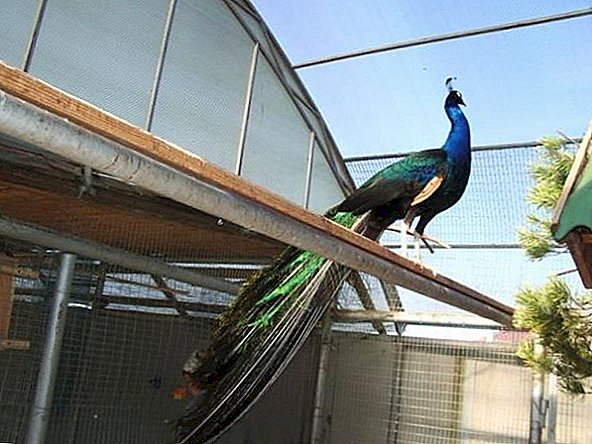
- For the hygiene of birds, it will be useful to install boxes in the aviary (you can measure 100x80x15 cm) and fill them with a mixture of ash and sand, in a ratio of 2: 5.
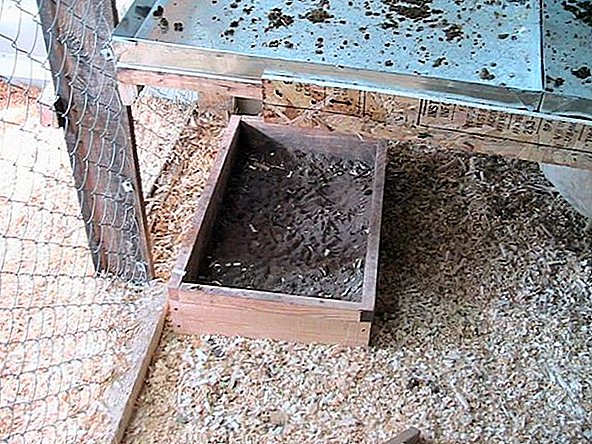
Care of the aviary
Caring for peacocks provides not only feeding, but also timely cleaning of the enclosure, with thorough washing and disinfection of water bowls and feeders at least 1 time per week. Cleaning bird excrement can be done more often, just like changing water in drinking bowls or hay in nests.
Recently, at home, exotic birds are increasingly bred: quails, pheasants, ostriches and guinea fowls.
These are mandatory conditions, of course, if you want to see your players always healthy. While cleaning the birds, they are temporarily resettled to another, fenced place, and they start back only after everything is dry.
In general, the care and maintenance of an open-air cage is as simple as its construction, therefore, with a little effort, you can always enjoy the beauty of peacocks and not worry about their health or safety.






